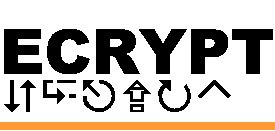Deepa Kundur
Deepa Kundur was born and raised in Toronto, Canada. She received the
B.A.Sc., M.A.Sc., and Ph.D. degrees all in Electrical and Computer
Engineering in 1993, 1995, and 1999, respectively, from the University
of Toronto, Canada. As of January 2003, she joined the Electrical
Engineering Department at Texas A&M University, College Station where
she is a member of the Wireless Communications Laboratory and holds the
position of Assistant Professor. Before joining Texas A&M, she was an
Assistant Professor with the Edward S. Rogers Sr. Department of
Electrical and Computer Engineering at the University of Toronto where
she was an Nortel Institute for Telecommunications Associate and Bell
Canada Junior Chair-holder in Multimedia.
Dr. Kundur's research interests include multimedia security, sensor
network security, video cryptography and digital watermarking for
digital rights management, data hiding and steganography for computer
forensics, nonlinear and adaptive information processing techniques,
and hardware implementation aspects of security algorithms. She has
given tutorials in the area of information security for digital rights
management at ICME-2003 and Globecom-2003, and is a guest editor of
the June 2004 Proceedings of the IEEE Special Issue on Enabling
Security Technologies for Digital Rights Management.
About the presentation of Deepa Kundur - 'Authentication Watermarking':
Authentication watermarking has been proposed an a "soft" alternative to the
traditional use of cryptographic message authentication codes (MAC) and
digital signatures (DS) to verify the integrity of multimedia information.
MACs and DSs indicate with high probability whether any bit-level change has
occurred to the message contact. For multimedia applications in which the
content may undergo adaptation (such as format conversion) or the delivery
network works under principles of "best-effort" service in which errors are
unavoidable, authentication watermarking is an attractive solution to
authentication and tamper assessment.
This talk provides an overview of the principles behind authentication
watermarking including watermark code design, embedding strategies, and
perceptual metrics. A comparison of authentication watermarking (referred
to as "embedding-based" authentication) to traditional "label-based"
approaches will be provided. Ways in which to incorporate cryptographic
security while proving tamper assessment capability are studied.



